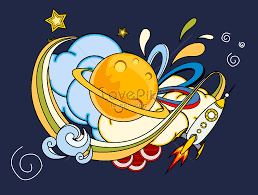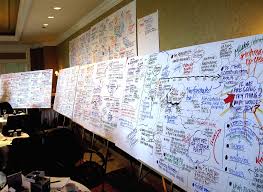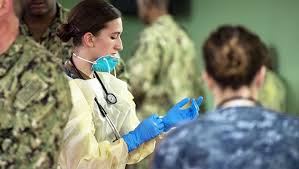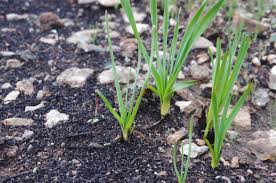
As we deal with the effects of COVID-19 on our lives and society in general, our thoughts are increasingly focused on the future. The chances are that changes we’ve seen in our social behaviors, in our personal hygiene and in our economy will have a lasting impact. The normal of the past will remain there and not be replicated in the future.
One aspect of life that could change is the arts. Across the fields of painting, music, film, writing and more, our experience as a result of the pandemic will be reflected widely and often. History supports this prediction in fascinating ways. Take a trip with me back through a few of the darker periods of human affairs. Some interesting patterns develop.
The Black Death
We all know about the Bubonic Plague. The king of the pandemics came in waves, enduring off and on for approximately 400 years. It took at least 75 million lives and possibly as many as 200 million. The worst years were in the 14th century, in the Dark Ages.
The darkness spread to the scenes depicted in artists’ creations, which had previously illustrated Biblical references to life followed by progression to a heavenly plane. Now it reflected a fear of death occasionally seen as the wage of sin. A pessimistic realism began to dominate artistic expression. Whereas deathbed scenes in earlier paintings would usually show the dying person surrounded by loved ones carrying out a type of social ceremony, the plague inspired scenarios where the afflicted was left alone with only Death overseeing the transition to the next world. Death might be shown as an angel or a decomposing skeleton.
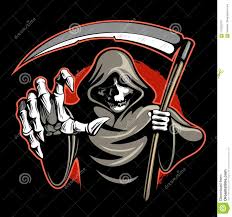
On a brighter note, one of the most influential books in history was written just after the worst of the pandemic, published in about 1353. Titled The Decameron, it was written by Giovanni Boccaccio. It is framed as a tale about seven women and three men who leave the highly infested Florence and shelter in a secluded villa. Each evening, they would sit around and each would tell a story. They did this for 10 nights and thus related 100 tales in all. They make up the bulk of the book, as the story of their sheltering is mainly a backdrop.
The Decameron stories vary in tone, but there’s plenty of humor to offset the tragic content. Some of the writers whose work was influenced by this classic include Shakespeare, Chaucer, Swift, Keats and Longfellow. Even modern film and television have used tales from The Decameron.
Spanish Flu
World War I was in its fourth year when at the beginning of 1918 the Spanish Flu hit. It hit hard for two years, ending the lives of as many as 100 million people.
There was a direct product of the epidemic in the area of artistic design. Because the virus could remain infectious longer on fabric furniture than harder surfaces, new furniture was created by Marcel Breuer of wood and tubular steel that was more practical for the times and fresh as well as innovative.
In the realm of oil painting, a unique style was mastered by an artist from France named of Chaim Soutine. He produced many landscape works that featured intense use of his brushes and bordered on the abstract. The themes were dark, but were sometimes comforting as well.
The Dada Movement, known for its satire and irrational qualities, covered painting, dance and poetry. It peaked during the epidemic and helped advance avant-garde subculture that probably helped pave the way for the changes of the Roaring Twenties.
The Global HIV/AIDS Pandemic
It’s just my opinion, but I think the HIV/AIDS pandemic has been the most underrated and under-acknowledged viral catastrophe in history. Being that the virus compromises the victim’s immunity to diseases, the person with HIV can die from resulting diseases such as tuberculosis, pneumonia and even cancer. Thus, HIV has been the root cause of more than 32 million deaths on the planet. Although the infections peaked in 1997, there were still approximately 1.7 million new cases in 2018.
This disease is terrifying, but it didn’t cause nearly the uproar that COVID-19 is currently. Without getting into a discussion of prejudicial views and the injustice attached to those views, I’ll just say it appears that once the majority population learned they could avoid it by practicing avoidable safe behaviors, they felt insulated and mostly put it out of their minds.
As to this pandemic’s effect on the arts, I am not aware of any related art that broke new ground when it comes to style or form. I may be missing pieces that did so along the way. Of great importance, however, is the content in the arts that shone a light on the humanity of those who contracted the disease and the suffering they endured.
Several examples of profound art that did rouse the attention of the detached who felt little compassion for the afflicted: 1) The film Philadelphia, which connected us with characters we cared about, making us hurt as we saw them wasting away into oblivion; 2) Large display art from the 1980s and on helped raise awareness of AIDS when the government and medical industry were largely ignoring it. Such slogans as “Silence=Death” and “I HAVE AIDS…Please hug me…I can’t make you sick” were strong reminders that some of our fellow humans were in need of help; 3) The AIDS Quilt Songbook is a musical effort aimed at bringing up awareness of the plague. It presented 18 songs that communicated directly, even bluntly, about the horror AIDS patients were going through. There have been subsequent editions of the songbook, keeping the message going.
What to Expect
There will be new songs out there about life-altering changes due to the COVID-19 pandemic. I’ve written one myself, a satirical look at how certain people at the top of the political food chain have reacted to the disaster and how they weigh the importance of the economy versus actual lives. I expect to see films and TV shows dramatizing the already intensely dramatic lives of our medical staff and essential workers whose contribution during these times has been nothing short of remarkable.
The effect the coronavirus has on our arts will likely be determined by just how rough the road ahead is, so from that perspective I hope the change will be minor. I do believe when this is over, our civilization will have a resurgence that may transcend the pre-virus version. After the Black Death, Europe entered into a Renaissance. After the Spanish Flu, big changes came with the Roaring Twenties. While we might not really assess properly the effect of HIV/AIDS, especially since it’s still not under full control, perhaps we can realize one positive aspect arising from it. Sexual orientation has gained wide acceptance, reducing discrimination tremendously in our society. While many saw the disease as a way of removing a segment of sinners from the earth, it may have been a way for the judges to see the judged as fellow humans who should be accepted as they are–whole.
Adversity presents an opportunity for growth. History has shown us how. May better times be ahead when this difficult time is behind us.
